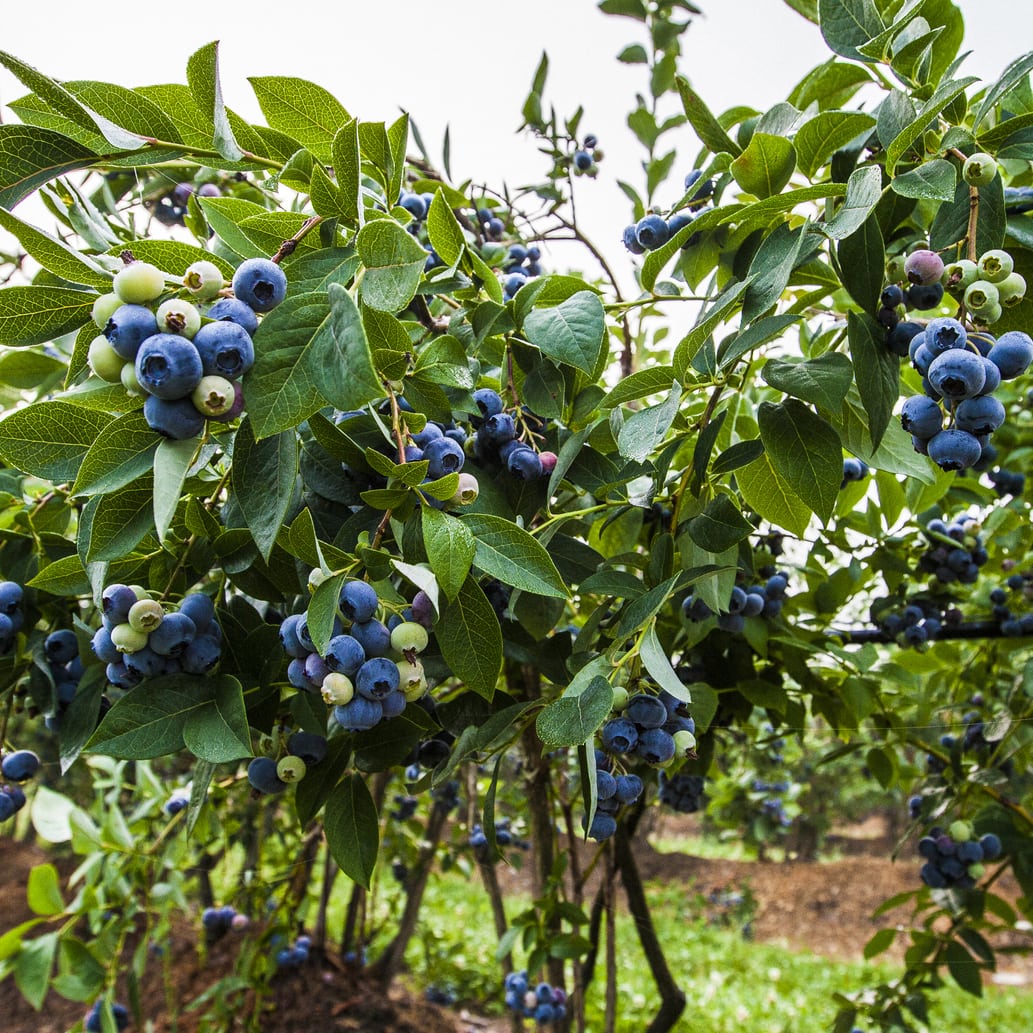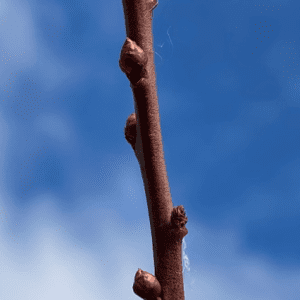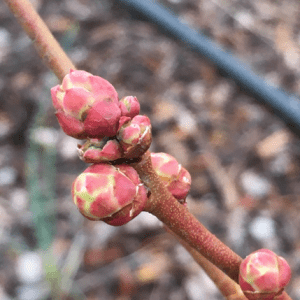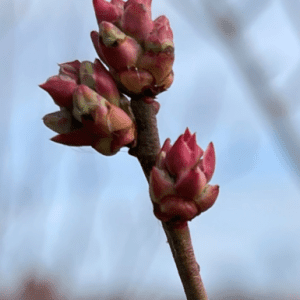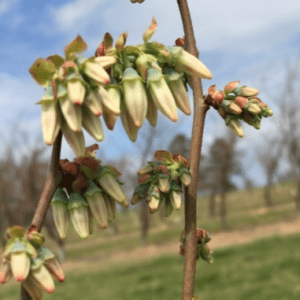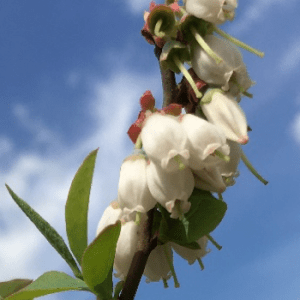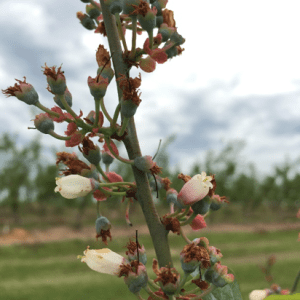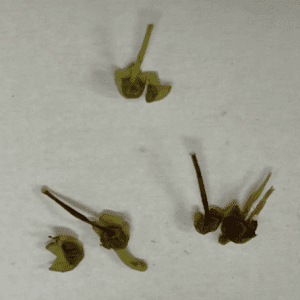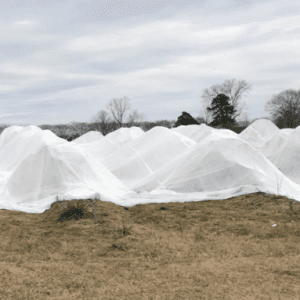Blueberries

The majority of rabbiteye blueberry varieties require between 350 and 700 chilling hours (hours with temperature below 450F) to break dormancy and start to develop in early spring. When the chilling requirement has been satisfied, plant’s hardiness decreases and periods of warm weather will cause flower bud growth. Similar to other fruit crops, susceptibility to cold damage in rabbiteye blueberry is directly dependent to the stage of flower development and increases as flower development progresses. The images (Figures 1 to 6) below demonstrate the blueberry bud stage of development. When the buds are dormant (Fig. 1), the bud scales are tightly closed, and no visible swelling is observed. Swollen (Fig. 2), unopened flower buds (outer bud scales begin to separate at the tip revealing paler interior bud scales) can withstand temperatures as low as 210F. Buds in which bud scales have abscised and individual flowers are distinguishable (Fig. 3) are killed at 250F. Flowers distinctly separated with corollas unexpanded and closed (Fig. 4) are killed at 280F. Fully opened flowers (Fig. 5) are damaged at 290F and young fruit (Fig. 6) are severely damaged at 300F. In general, earlier blooming rabbiteye blueberry varieties are more prone to freeze injury because they will have the greatest number of advanced blooms when a killing freeze occurs.
How do I know if my blueberries are damaged by the cold?
To find out if the blueberry flower buds have been damaged by frost you can cut through the bud several hours after a freeze and look for browning that indicates injured tissue (Fig. 7). Sometimes the freeze injury is not severe enough to kill the fruit or flower completely but may affect some individual part, such as the pistil, stamen or seeds, which may result in a reduction in fruit set or berry size.
How can I protect the blueberries from a cold damage?
Floating row covers (Fig. 8) are especially useful for small acreages of low-growing crops or when water for overhead irrigation is not available. The amount of frost protection will vary depending on the weight and fiber arrangement of the row cover. Usually the amount of protection increases with the weight, though differences in texture make this correlation less than perfect. Row covers weighing 0.6 ounces per square yard typically can give 2 or 3 degrees protection during a radiational freeze, while nursery foam covers or a double layer of row covers can give more than10 degrees of protection. Weather conditions before the frost affect the amount of protection obtained from row covers because little or no heat may accumulate under the row cover on cloudy windy days. When row covers are used for frost protection, they should be pulled over the crop during mid-afternoon to allow heating to take place.
- Figure 1. Dormant rabbiteye blueberry flower (the three larger on the left side of the branch) and leaf (one smaller on the right side) buds.
- Figure 2. Swollen rabbiteye blueberry flower buds.
- Figure 3. Tight cluster stage of rabbiteye blueberry flower buds.
- Figure 4. Rabbiteye blueberry flowers distinctly separated with corollas unexpanded and closed.
- Figure 5. Fully opened rabbiteye blueberry flowers.
- Figure 6. Rabbiteye blueberry young fruit set.
- Figure 7. Cut blueberry flower buds showing a healthy bud (on top) and cold damaged necrotic buds (lowermost).
- Figure 8. Row covers used to protect four rows of rabbiteye blueberries.
Blueberry bushes can be better protected from cold injury by maintaining a moist soil during the period when frosts are possible. By increasing the amount of water in the soil, the soil will absorb more heat during the day and conduct more heat to the surface for plant protection. Please remember that excess water for extended periods of time must be avoided to prevent flooding or phytophthora root rot damage.
Overhead water sprinkling is another effective method of frost protection. However, it is somewhat expensive to install and requires a large volume of water. Water volume is critical! It is necessary to apply 1/2 inch to 1 inch of water per hour and at least one sprinkler rotation per minute. Water must be applied constantly because ice is a poor insulator. Protection comes from the constant application of liquid water, which is above 32 degrees F, and the release of heat when water turns to ice. This keeps the plant tissue at or above 31.5 degrees F. The water must be applied constantly until the air temperature rises above 32 degrees F. If the water is turned off too soon, the entire crop may be lost.
References
https://blueberries.extension.org/frost-and-freeze-protection-blueberries/
https://content.ces.ncsu.edu/blueberry-freeze-damage-and-protection-measures

